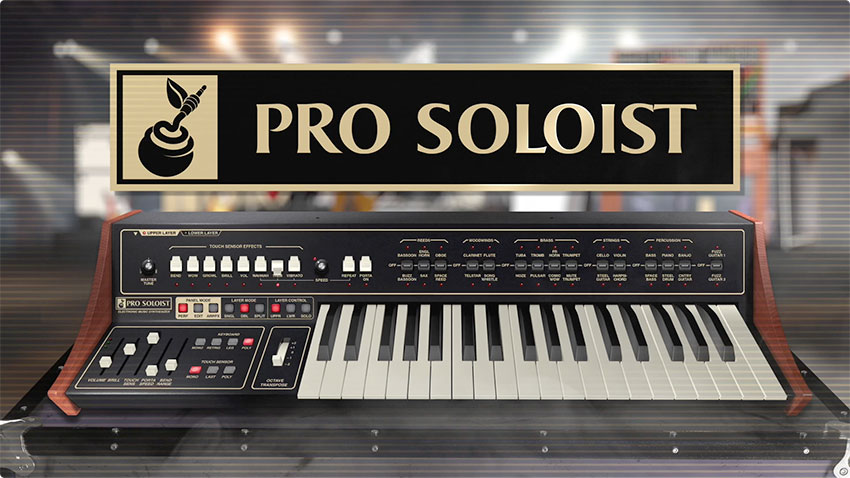
At the beginning of the 70s, analog synthesizers were just making their way into the hands of working musicians, and their operation was still something of a mystery to most folks outside of a college music lab. In order to avert potential user intimidation and bring synthesis to the masses, manufacturers including Moog, Elka, and later Roland and Yamaha, produced simple monophonic preset synths, intended to sit atop an organ. ARP's first foray into the organ-top preset lead synth market was the Soloist, released in 1970, with 18 presets and basic controls.
Soon thereafter in 1972, the ARP Pro Soloist was released. With much-improved tuning stability, and now featuring 30 presets, it expanded the Soloist's feature set to include an innovative "touch sensor" keyboard - what's now commonly known as a aftertouch, where pressing harder after playing a note introduces changes in the sound, allowing highly expressive playing. Specifically, the Pro Soloist's touch sensor controls enabled pitch bend, wow (wah), growl (a sax-like rapid filter mod), brilliance, volume, and vibrato. This was pretty heady stuff in the early 70s, and the Pro Soloist proved popular with touring and recording musicians for its ability to rapidly emulate lead instrument sounds such as horns, strings, woodwinds, and more. Most notably, Genesis' Tony Banks made use of a Pro Soloist on numerous tracks of their seminal release, "The Lamb Lies Down on Broadway."
With the advent of fully-programmable, polyphonic synths such as the Prophet-5 and Oberheim OB-series synths at the end of the 70s, preset monophonic instruments like the Pro Soloist rapidly fell by the wayside. But other than Yamaha's pricey CS-series poly synths, aftertouch wouldn't be seen again in instruments until the advent of the 80's MIDI instrument era.
Here at Cherry Audio, we've had frequent requests to reproduce this oft-forgotten expressive gem of a synth, particularly Genesis connoisseurs! Our frequent collaborator Mark Barton is one of those folks, and not only has he programmed an incredibly accurate emulation (including spot-on emulations of the original presets), but together we've massively expanded the Pro Soloist's capabilities by making it fully polyphonic (up to 16 voices), AND we've "brought out" all of the parameters of its unique analog synthesis architecture, most notably, the five parallel bandpass filter "Resonator Bank," (these are the key to the Pro Soloist's realistic acoustic orchestra timbres) allowing full user programmability. Additionally, we've added a full six-slot mod matrix, and studio-quality effects - converting this somewhat bare bones monophonic lead synth into a massive, polyphonic powerhouse.
We've been pleasantly surprised at the stunning sounds we've been able to coax from this hot-rodded Pro Soloist; we hope you'll enjoy it as much as we do.
Pre-Purchase Demo Mode

If you haven't purchased the full version of Pro Soloist, it will run in demo mode. All functions will work, but inharmonic tones will occasionally sound (the LED next to Demo in the top toolbar will illuminate when the ugly tones are sounding). We've also added a handy button to make purchasing easy, so you've got no excuse! As you might expect, all the demo stuff disappears once Pro Soloist is purchased.
Technical Assistance
Cherry Audio's online store and automatic updating should make operation a smooth experience, but if you run into any issues or have questions, you can discuss issues online at the Cherry Audio Forums, or communicate directly with our swell tech support staff at https://cherryaudio.kayako.com/.